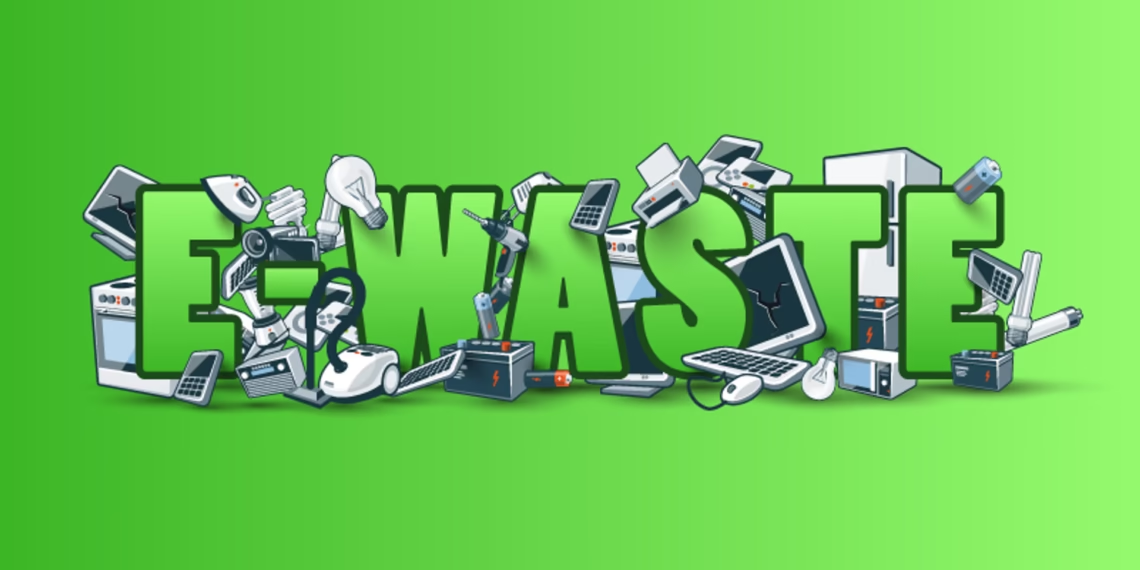.

As technology advances at lightning speed, it’s becoming increasingly common to upgrade our gadgets and devices. But what do we do with our old computers and printers? Just tossing them in the trash can harm the environment and contribute to the growing problem of e-waste. The good news is that there are options for recycling your old tech for free, and in the process, helping the planet.
First and foremost, it’s important to understand why recycling old tech is so important. Electronics contain materials that can be harmful to the environment such as lead, mercury, and cadmium, all of which can leak into our soil and water supply if not disposed of properly. By recycling, we can minimize the negative impact on our planet and even reclaim valuable materials that can be used in new products.
So, what’s the best way to recycle your old computers and printers? Before you do anything, make sure to back up any important data and wipe your devices clean of personal information. Next, consider donating your still functioning tech to a charity or non-profit organization. Many organizations, including schools and community centers, would be grateful for the donation and it would also give your devices a second life.
Summary of E-Waste Recycling
What is E-Waste?
E-waste refers to discarded electronic equipment like smartphones, computers, refrigerators, and televisions. These items often contain hazardous substances, including mercury, lead, cadmium, and other forms of toxic materials. Without proper e-waste disposal, these materials leach into soil and water supplies, creating long-lasting ecological and health challenges.
The Recycling Process
E-waste recycling typically includes several steps to retrieve valuable resources while safely removing harmful elements:
- Collection and Transport: Old and unused devices are gathered and transported to a recycling facility.
- Sorting: Materials are categorized based on type, such as plastics, metals, and hazardous materials. Manual sorting and advanced technologies, like eddy current separators, ensure accuracy.
- Dismantling: Devices are disassembled to extract components like batteries, circuit boards, and screens.
- Processing: Recyclers process components to reclaim precious metals like gold, copper, and silver.
Environmental and Social Advantages
Preservation of Natural Resources

E-waste contains many reusable resources like aluminum, palladium, and rare earth metals. Recycling prevents excessive mining of virgin materials, helping conserve the planet’s natural assets. For instance, reclaiming copper from defunct devices decreases the dependency on mining, which uses significant energy and damages ecosystems. This move toward a circular economy promotes sustainable solutions for managing raw materials.
Reducing Landfill Use
When electronic devices end up in landfills, their toxins gradually penetrate into the soil and water, contaminating these resources. Proper electronics recycling limits the accumulation of harmful substances, offering an effective solution to waste management.
Combatting Climate Change
The improper handling of devices such as refrigerators or air conditioners releases harmful greenhouse gases. By properly dismantling such products during the recycling process, emissions can be reduced substantially, aiding in climate stabilization.
Health Risks from Improper Disposal
Toxin Contamination
Discarded electronics release dangerous chemicals into the environment if not recycled responsibly. These toxins can infiltrate water supplies and food sources, harming human health. Lead, a primary ingredient in many devices, poses risks like neurological and developmental disorders when not safely removed.
Protecting Water Sources
E-waste seeping into groundwater pollutes lakes and rivers, posing threats to wildlife and humans alike. Recycling facilities take measures to mitigate this risk, preventing widespread water contamination.
Promoting Efficiency and Local Economies
Energy Savings
Recycling electronic equipment requires much less energy than producing materials from scratch. For instance, recycling aluminum requires only 5% of the energy needed to mine and refine new aluminum. Over time, these energy savings contribute to reduced emissions and a smaller carbon footprint.
Cost Reduction for Manufacturers
Through e-waste recycling, raw materials become more readily available, lowering manufacturing costs for new products. This accessibility translates into more affordable prices and reduced environmental strain from mass production.

Inspiration for Social Responsibility
Encouraging communities to recycle electronic products fosters environmental awareness and inspires a culture of accountability. Many recycling programs address this by educating the public on proper disposal methods and emphasizing the importance of reduced waste.
Key Materials Recovered
Below is a table highlighting valuable materials recovered in e-waste recycling and their use cases:
| Material | Found In | Uses Post-Recycling |
|---|---|---|
| Gold | Circuit Boards, Connectors | Jewelry, electronics manufacturing |
| Silver | Switches, Circuit Boards | Electronic devices, batteries |
| Copper | Wires, Motors | Electrical cables, industrial equipment |
| Aluminum | Hard Drives, Casings | Construction materials, transportation (e.g., cars and planes) |
Extended Producer Responsibility (EPR)

EPR is a sustainability approach where manufacturers are held accountable for the end-of-life management of their products. This strategy encourages brands to design products that are easier to recycle and causes less harm to the environment. By holding businesses to higher standards, governments and organizations push for meaningful change in e-waste management practices.
Challenges in Implementation
Limited Accessibility
Recycling programs often struggle with limited capacity or lack of widespread availability. Many regions lack designated collection points, making it difficult for individuals to properly dispose of their unwanted devices.
Improper Handling
Unregulated facilities may not follow strict guidelines for handling hazardous materials. This negligence endangers workers and surrounding communities, showing the need for better industry oversight.
Conclusion Removed Per Instructions
Frequently Asked Questions
What are the advantages of recycling old electronics?
Recycling electronic waste helps recover valuable materials like metals, plastics, and glass that can be reused. This reduces the demand for mining raw materials, conserving natural resources. Additionally, it lowers the amount of hazardous waste that would otherwise end up in landfills, minimizing potential harm to health and the environment.
In what ways does recycling electronic waste help the planet?
Electronic waste recycling prevents toxic materials, such as lead and mercury, from seeping into soil and water. Reusing materials instead of sourcing new ones reduces energy consumption and greenhouse gas emissions, thus decreasing the overall environmental impact of electronic production and disposal.
Is recycling electronic waste different from other types of recycling?
Unlike standard waste, electronic waste often contains both dangerous and valuable materials that require specialized handling. Processes like deconstructing devices, safely extracting components, and properly managing hazardous substances differentiate e-waste recycling from regular waste processing.
What factors should be kept in mind when beginning an e-waste recycling initiative?

Starting an electronic waste recycling program involves identifying local recycling facilities, understanding regulations about handling hazardous components, and educating participants about separating and disposing of electronics appropriately. Clear labeling and accessible drop-off points can also encourage participation.
How can people take part in electronic waste recycling effectively?
Individuals can look for certified e-waste recycling centers in their community and safely drop off unused electronics instead of throwing them in the trash. Donating functional devices to charities or refurbishing them for reuse are also practical ways to contribute.
What obstacles arise in managing and recycling electronic waste?
Challenges in e-waste management include a lack of awareness about proper disposal methods, limited access to authorized recycling centers, and the complexity of handling hazardous elements. Furthermore, designing cost-effective systems to extract valuable materials can be difficult. Proper regulations and widespread education are vital for overcoming these issues.





































